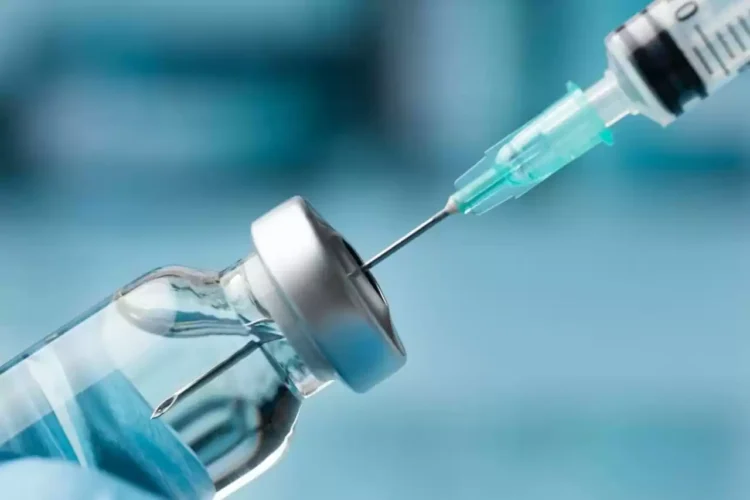Research in rats reveals that BPC-157 has healing and anti-inflammatory qualities, but human-based clinical trials are lacking. The questions on everyone’s lips remain: “Is BPC-157 worth the hype?”
We promise that by the time you conclude this article, you’ll be in a position to decide whether BPC-157 is worth considering as a means of breaking through training and fitness plateaus.
What is BPC-157 Peptide?
Body protection compound 157 (BPC-157) is a pentadecapeptide. It’s made up of 15 amino acids, but in a very unusual order that doesn’t occur in nature.
It is manufactured in labs utilizing a partial sequence of chemicals identified from stomach secretions that have protective effects on the body. Thus, it is a form of peptide that naturally occurs in the digestive secretions of humans.
What is the mechanism of action of BPC-157?
BPC-157’s curative effects occur through many mechanisms. Forming new blood vessels, or angiogenesis is a frequent mechanism through which BPC-157 exerts its therapeutic effects.
This situation occurs because it stimulates the production of a protein called vascular endothelial growth factor, which in turn causes the development of new blood vessels. Because of this, BPC-157 can organize a healthy vascular network, one of its primary regenerative and healing effects.
Another way BPC-157 works is by inhibiting a negative growth modulator known as 4-hydroxynonenal. This process makes it possible for the peptide to repair wounds, particularly those tight tendons, effectively.
As a bonus, it may stimulate the tendon cells to make additional receptors that bind to growth-signaling chemicals. The goal here is to hasten the healing and expansion that naturally occurs.
BPC-157 peptide likewise enhances the proliferation of fibroblasts. Collagen is an abundant and vital structural protein in the human body, and fibroblasts are crucial in its production.
Clinical trials have also shown that Body Protection Compound-157 affects how neurotransmitters in the brain function. The likelihood of acquiring depressive, anxious, and stress-related symptoms is reduced by the activity of this peptide, which influences neurotransmitters, including serotonin, dopamine, and GABA.
Moreover, this peptide is known to stimulate the secretion of nitric oxide (NO), which causes the dilation of endothelial cells. As a result, there is a general decrease in blood pressure throughout the body. Furthermore, it helps treat hyperkalemia or abnormally high potassium levels.
The Best Place to Get BPC-157 Peptides
Scams are common, so be cautious. Since BPC-157 may not be as widely available as other synthetic peptides, it is easy to fall prey to cheap costs and subpar quality.
Your best bet for obtaining BPC-157 is through a service or pharmacy in the United States. BiotechPeptides is the most dependable vendor.
Potential Gains from BPC-157
While the lack of human trials casts doubt on the integrity of these benefits, some of the most notable advantages of BPC-157 identified in rat-based research may be linked. Given that BPC-157 is isolated from stomach acid, it stands to reason that here is where it will do the most good.
BPC-157 peptide, in particular, is effective in treating stomach ulcers. This pentadecapeptide has also been shown to be effective in treating gastrointestinal fistulas, essentially abnormalities in the digestive system, in rats via clinical testing.
In addition to reducing inflammation at the wound site, BPC-157 has shown promise in tests against inflammatory bowel disease (IBD). Using the process of angiogenesis, Body Protection Compound -157 is particularly successful in treating Achilles tendons and muscle repair in clinical testing on rats.
The growth rates of bones, tendons, and joints may be affected by this compound because it causes an increase in the receptors for growth hormones. This chemical has been shown to hasten the recovery of burned skin as well. In addition, skin that has been sliced several times heals quickly after being treated with BPC-157. When this compound is administered sufficiently, damaged bone initiates a regeneration process. The expansion of fibroblasts is responsible for this phenomenon.
BPC-157 promotes new nerve cell proliferation, affecting the brain and cognitive function. This process ensures that cognitive deterioration due to aging is kept to a minimum.
Trials on rats poisoned with NSAIDs showed a surprising reversal of toxic effects following injection with BPC-157. Therefore, it may be administered to reduce toxicity in the liver and kidneys. Finally, BPC-157 is considered a moderate pain killer since it has been found to reduce the intensity of painful feelings.
When is it appropriate to take BPC-157?
Intestinal illnesses, including Celiac disease and other GIT ulcers, may benefit from BPC-157’s anti-inflammatory and healing effects.
Because of its therapeutic properties, active subjects may utilize this substance to speed up the recovery of any tendon, muscle, or bone injuries they may have had. Muscle-building hopefuls might also benefit from this chemical because of how well it works in a training program.
Dosage of BPC-157
Due to the absence of pharmacologic investigations, the scientifically confirmed dose of BPC-157 is uncertain; nonetheless, the unofficial but optimum dosage of BPC-157 proposes approximately 1mcg to 10mcg per kg of body weight.
How To Stack BPC-157
Experts say that adding TB500 to BPC-157 would speed up the process without compromising the quality of the findings. This speeding is because both chemicals operate similarly.
Angiogenesis, controlling growth factors, and serving as an anti-inflammatory agent are ways TB500 helps the body recover faster than it would without BPC-157’s stimulation of growth hormone receptors. As a result, the total impact on the human body is enhanced by this synergistic activity.
Implications of BPC-157
Because of the scarcity of human-based research, it is impossible to determine whether or not BPC-157 usage poses any health risks. Animal studies have shown that BPC-157 is safe, with no serious adverse effects recorded. We have noticed no serious adverse effects in either rat trials or our own experiences.
Compare and contrast: BPC-157 with TB500.
The frequency of use is a fundamental distinction between the two substances. On a consistent biweekly basis, BPC-157 is a given. However, TB500 injections are only required once or twice weekly.
BPC-157 is more likely to have a regional impact than TB500, which has a more widespread one. Furthermore, compared to TB500, the latter has superior healing properties. In contrast to BPC-157’s anti-inflammatory properties, TB500 is essential for mending torn muscles.
Thymosin Alpha-1 vs. BPC-157
In contrast to BPC-157, TA1 stands out since doctors may prescribe it. A growing body of clinical evidence demonstrates that TA1 effectively improves immunity and decreases inflammation.

















